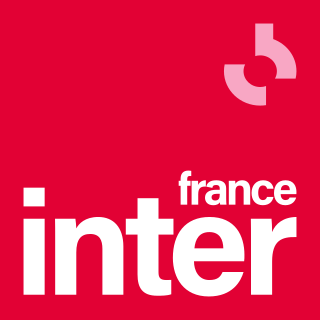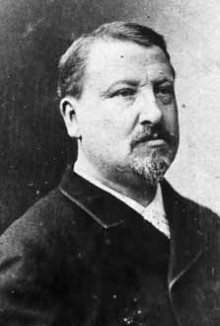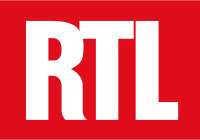International broadcasting consists of radio and television transmissions that purposefully cross international boundaries, often with then intent of allowing expatriates to remain in touch with their countries of origin as well as educate, inform, and influence residents of foreign countries. Content can range from overt propaganda and counterpropaganda to cultural content to news reports that reflect the point of view and concerns of the originating country or that seek to provide alternative information to that otherwise available as well as promote tourism and trade. In the first half of the twentieth century, international broadcasting was used by colonial empires as a means of connecting colonies with the metropole. When operated by governments or entities close to a government, international broadcasting can be a form of soft power. Less frequently, international broadcasting has been undertaken for commercial purposes by private broadcasters.

AM broadcasting is radio broadcasting using amplitude modulation (AM) transmissions. It was the first method developed for making audio radio transmissions, and is still used worldwide, primarily for medium wave transmissions, but also on the longwave and shortwave radio bands.

In radio, longwave, long wave or long-wave, and commonly abbreviated LW, refers to parts of the radio spectrum with wavelengths longer than what was originally called the medium-wave broadcasting band. The term is historic, dating from the early 20th century, when the radio spectrum was considered to consist of longwave (LW), medium-wave (MW), and short-wave (SW) radio bands. Most modern radio systems and devices use wavelengths which would then have been considered 'ultra-short'.
Ríkisútvarpið (RÚV) is Iceland's national public-service broadcasting organization.

Atlantic 252 was an Irish longwave radio station broadcasting to Ireland and the United Kingdom on 252 kHz from its 1988 purpose-built transmission site at Clarkstown radio transmitter, County Meath, which provided service to Atlantic 252 from 1989 until 2002. The station's studios were located 12 km (7 mi) away in Mornington House, Summerhill Road, Trim, County Meath. Atlantic 252 also had sales offices and studios at 74 Newman Street in London.

Junglinster is a commune in central Luxembourg, which draws its name from its principal town, Junglinster. It is one of six communes in the Luxembourg canton of Grevenmacher. The 18th-century St Martin's church is a national monument.

Europe 1, formerly known as Europe n° 1, is a privately owned radio station created in 1955. It was owned and operated by Lagardère Active, a subsidiary of the Lagardère Group, it was one of the leading radio broadcasting stations in France and its programmes were received throughout the country. In January 2022, the right-wing populist media mogul Vincent Bolloré took over the station.

France Inter is a major French public radio channel and part of Radio France. It is the successor to Paris Inter, later known as France I, and created as a merger of the France I and France II networks, first as RTF Inter in October 1963, then renamed to its current name in December of that year. It is a "generalist" station, aiming to provide a wide national audience with a full service of news and spoken-word programming, both serious and entertaining, liberally punctuated with an eclectic mix of music. It is broadcast on FM from a nationwide network of transmitters, as well as via the internet.

Radiodiffusion-Télévision Française was the French national public broadcaster television organization established on 9 February 1949 to replace the post-war "Radiodiffusion Française" (RDF), which had been founded on 23 March 1945 to replace Radiodiffusion Nationale (RN), created on 29 July 1939. It was replaced in its turn, on 26 June 1964, by the notionally less-strictly government controlled Office de Radiodiffusion Télévision Française (ORTF), which itself lasted until the end of 1974.

The BBC Regional Programme was a radio service which was on the air from 9 March 1930 – replacing a number of earlier BBC local stations between 1922 and 1924 – until 1 September 1939 when it was subsumed into the BBC Home Service, two days before the outbreak of World War II.

The BBC National Programme was a radio service which was on the air from 9 March 1930 – replacing the earlier BBC's experimental station 5XX – until 1 September 1939 when it was subsumed into the BBC Home Service, two days before the outbreak of World War II.

FIP is a French radio network founded in 1971. It is part of the Radio France group.

The Beidweiler longwave transmitter is a high-power broadcasting transmission site owned by RTL Group and operated by RTL company Broadcasting Center Europe. It was used to transmit the French-speaking programme of RTL on longwave frequency 234kHz until 1 January 2023. Based in Beidweiler, Luxembourg, the transmission site is situated at 49°43'58" N and 6°19'08" E and went into service in 1972 as replacement of the old Junglinster Longwave Transmitter. Junglinster remained in use as a backup site and for additional broadcast services.
Radio Luxembourg was a multilingual commercial broadcaster in Luxembourg. It is known in most non-English languages as RTL.

French radio stations are licensed and regulated by the CSA, and public radio services are provided by Radio France.

Fun Radio is a French network of FM radio stations created on 2 October 1985 and offering electropop, dance and eurodance music, operating on 250 different frequencies in France. The station belongs to RTL Group as do its sister stations RTL and RTL2. The three radio stations share the same headquarters located in Neuilly-sur-Seine.

RTL9 is a French-language Luxembourgish television channel shown in Luxembourg, France, Monaco, Africa and the French-speaking regions of Switzerland.
Bel RTL is a commercial radio network broadcasting in Brussels and Wallonia. The station is owned by the Radio H holding company, which is part of the Belgium-based RTL Belgium. It is now owned by DPG Media and Groupe Rossel since 31 March 2022.

RTL-TVI is a private French-language, Belgium-based television station owned by DPG Media and Groupe Rossel, it was originally owned by the RTL Group until 31 March 2022. Till 2022 it broadcast with a Luxembourgish licence but the new owners preferred a Belgian licence. Within the French-speaking area of Belgium, it is the most popular channel with a 20 percent viewing share. It was the first commercial television station in Belgium.
This is a timeline of RTÉ Radio.


















